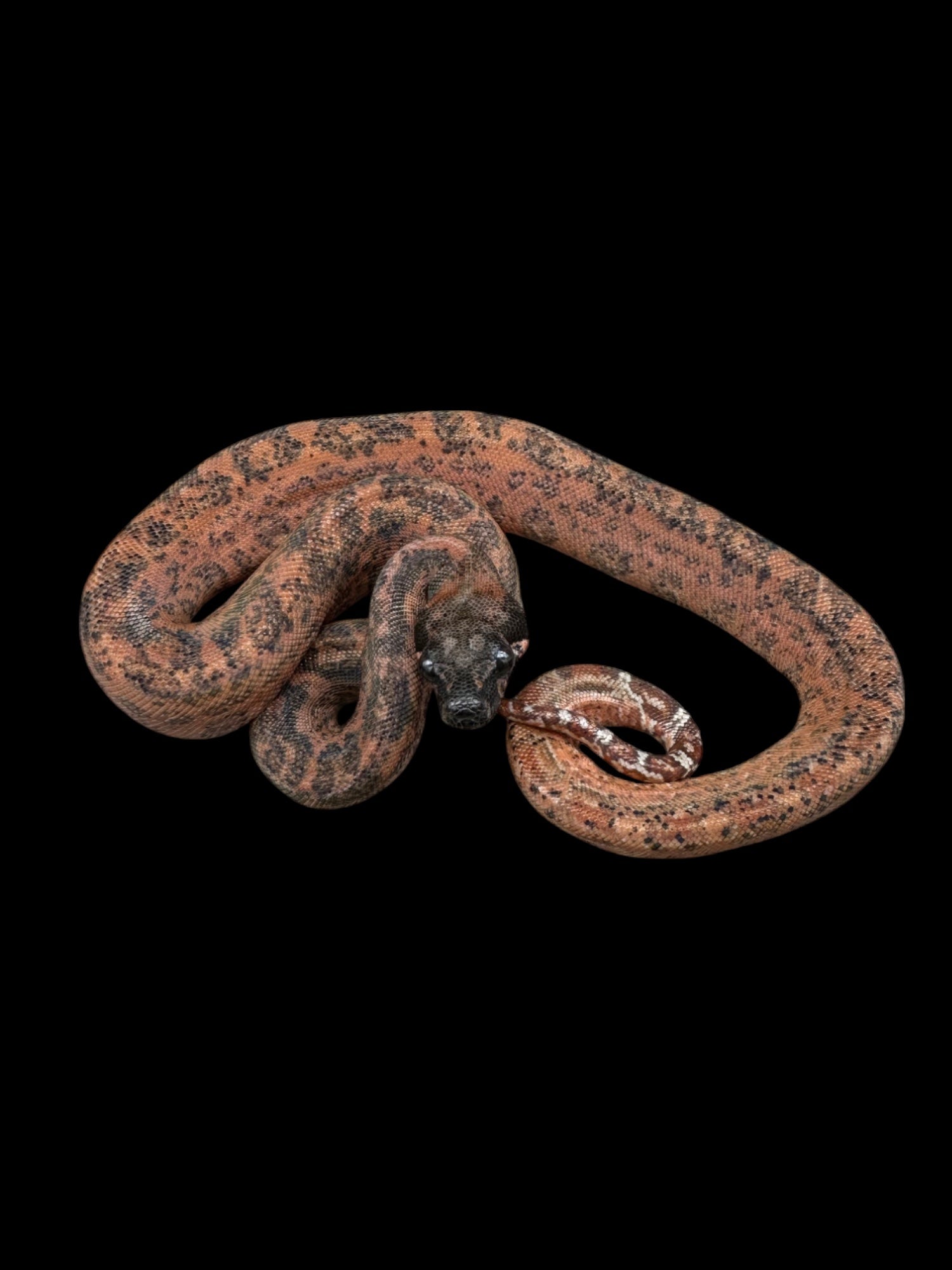Photo Disclaimer
Description
Sonoran Desert Boa (Hypo Leopard)
Boa constrictor imperator
Common Names: Sonoran Desert Boa, Leopard Boa
Species Overview
-
Size: Adults average 4–6 feet (1.2–1.8 m), with females typically larger and bulkier than males. Sonoran Desert boas are notably smaller and more compact than Colombian BCIs.
-
Appearance: The Leopard morph (recessive) creates broken or chaotic saddle patterns, giving a “spotted” look with unique side markings. The Hypomelanistic (Hypo) trait (co-dominant) reduces black pigment, brightening the ground color and sharpening contrast. Together, the Hypo Leopard has a bold, clean look—lighter background tones with irregular dark markings and high contrast.
-
Distribution: Native to the Sonoran Desert region of northwestern Mexico.
-
Habitat: Arid scrubland, rocky deserts, and dry forests, often utilizing burrows, rocky crevices, and shaded cover.
-
Behaviour: Primarily nocturnal and crepuscular ambush predators, feeding on small mammals, birds, and reptiles. Secretive during the day, becoming more active at night.
Captive Care
-
Enclosure: A 4’ × 2’ × 2’ enclosure is suitable for most adults. Provide multiple hides, climbing branches, and secure ventilation. Substrates such as aspen, cypress mulch, or soil-based mixes work well for burrowing.
-
Temperature & Humidity: Maintain a daytime gradient of 78–82°F (25–28°C) with a basking spot at 88–90°F (31–32°C). Nighttime dips to 72–75°F (22–24°C) are acceptable. Humidity should remain 40–55%, with slight increases during shed cycles.
-
Diet: Juveniles thrive on fuzzy mice every 5–7 days; adults on appropriately sized rats every 10–14 days. Adjust feeding frequency to prevent obesity, as Sonoran boas are smaller-bodied than Colombian boas.
-
Behaviour in Captivity: Generally calm, manageable, and hardy, Sonoran boas adapt well in captivity and tolerate handling with minimal stress.
-
Special Considerations: While selective breeding has produced a wide variety of morphs, their core care requirements remain identical to standard Boa constrictor imperator.
Genetics Note
-
Hypomelanistic (Hypo): Co-dominant mutation that reduces black pigmentation, enhancing brightness and contrast.
-
Leopard: Recessive mutation producing irregular, spotted or broken saddle patterns.
-
Hypo Leopard: The combined expression yields a visually striking boa with a brightened background and disrupted dark patterning.

